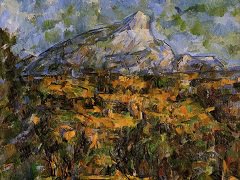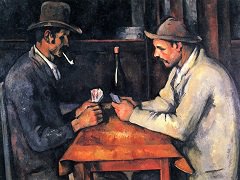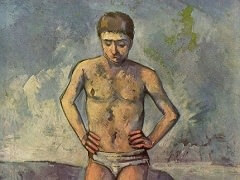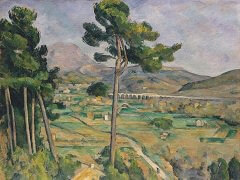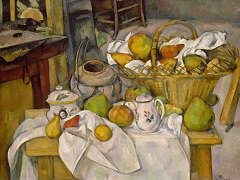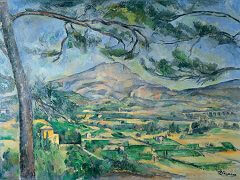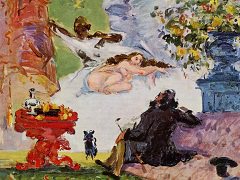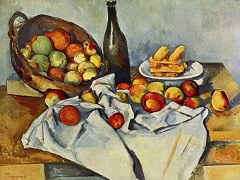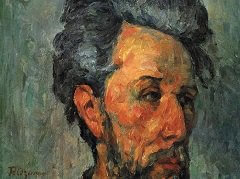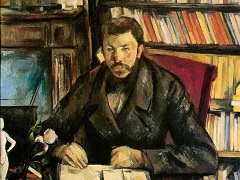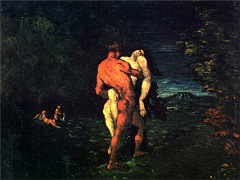Still Life with Apples and Oranges, 1895 by Paul Cezanne
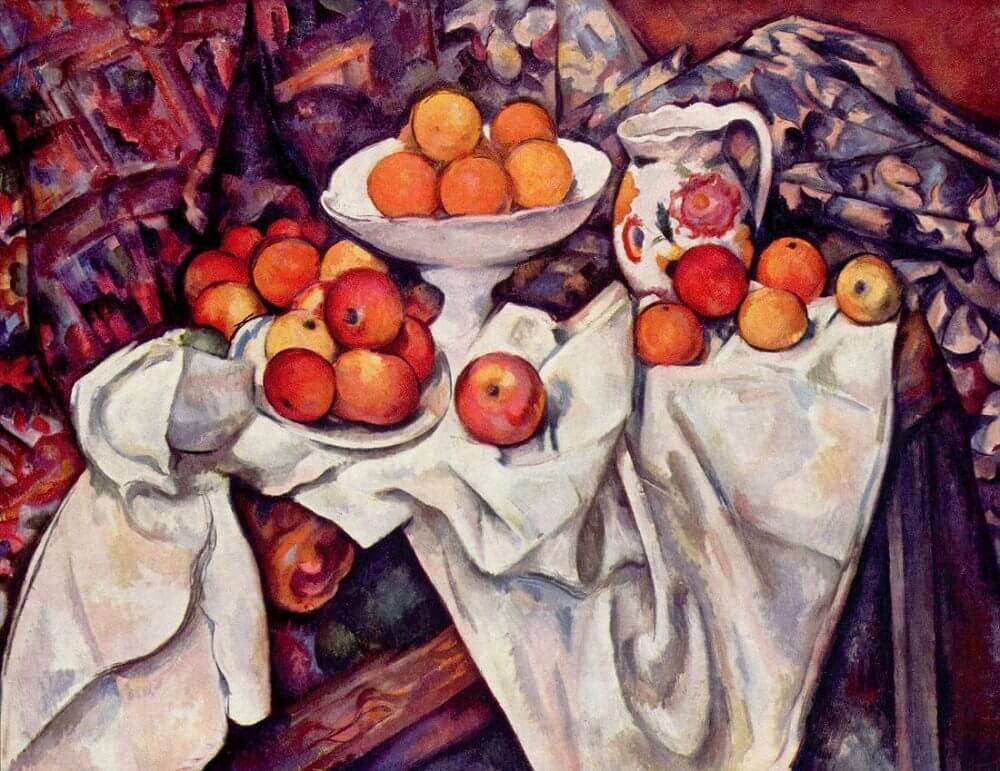
In Still Life with Apples and Oranges, 1895, another side of Cezanne comes into fullest play. This still life is of an imperial sumptuousness. We feel throughout the work the painter's joy in the luxuriance and profusion of colorful things, unconstrained by his meditative habit. The old stabilizing (and detaching) construction - the rectangular framework of the table and the clear plane of the wall - has disappeared. Instead, the space as a whole is draped and richly broken; the difference between depth and surface, the vertical plane and the horizontal, is veiled. Everything comes forward; yet there is also a palpable depth, as in the succession of fruit at the left. We are reminded of the space of the quarry and the mountain in the picture of Mont Sainte-Victoire.
Cezanne seeks here a continuity of elements more complete than in his earlier work. The compotier grows out of the beautiful white cloth, and the decorated jug seems to be a fusion of that cloth with the apples and oranges and the ornamented drape behind it. The effect is dense, even crowded, like his landscapes with woods and rocks, and is enormously rich in unexpected shapes and chords of color, almost to the point of engorgement. It is not at all a "natural" still life - something we might encounter in a home - but a fantastic heaping up of things, in which we discern, however, a clear controlling taste. The complexity of this work belongs both to the pride of a well-exercised masterliness and the delight of the senses. More than most of Cezanne's still lifes, it impresses us as an orchestrated work, because of the wealth of distinct, articulated groups of elements carried across the entire field of the canvas. The white cloth is magnificent in its curving lines, its multiplicity of contrasted directions, its great rise and fall, and in the spectrum delicately toning its brilliant white surface. Against this complication of whiteness and the subdued chords of the mottled drapes (warmer and more angular in ornament at the left, cooler and with curved ornament at the right) play the rich pure notes of the fruit. These are grouped simply, in varying rhythms, and are so disposed as to form together a still life on a horizontal axis - a secret stabilizer among the many sloping shapes. A delightful metaphoric fancy is the decoration of the jug with red and yellow flowers like the nearby fruit; it is a bridge between the fruit and the ornamented drapes, of which the patterns, broken by the folds, are a rich flicker of less intense, contrasting tones.
A characteristic theme in the larger design is a sharply pointed form, which appears in many parts: in the silhouette of the white cloth, in its angles with the table and the edges of the canvas, in the drape at the upper left in the tall, peaked fold, and elsewhere.
Painted during a period when Cezanne produced many powerful images of solitude and unrest, Still Life with Apples and Oranges has the same emotional force and masterful inventiveness in the expression of joy.


